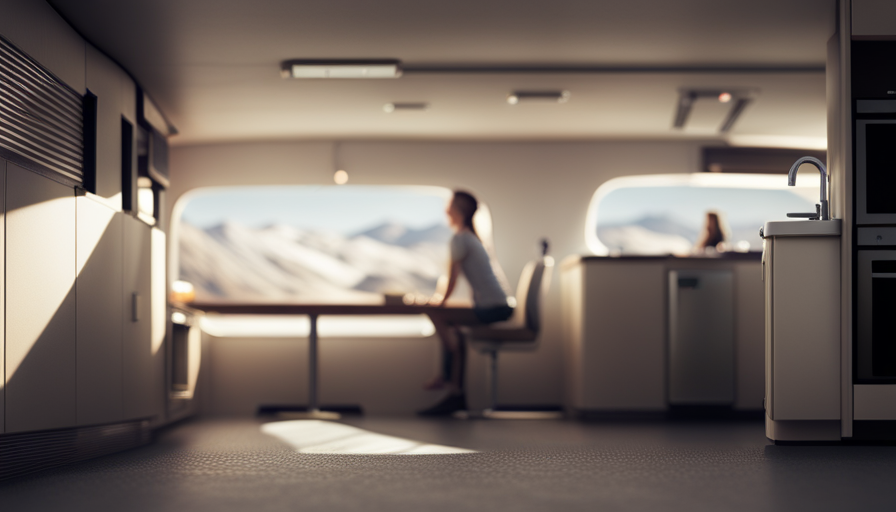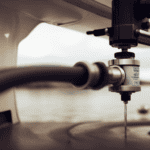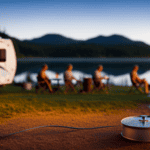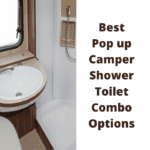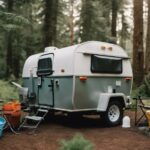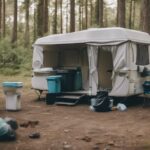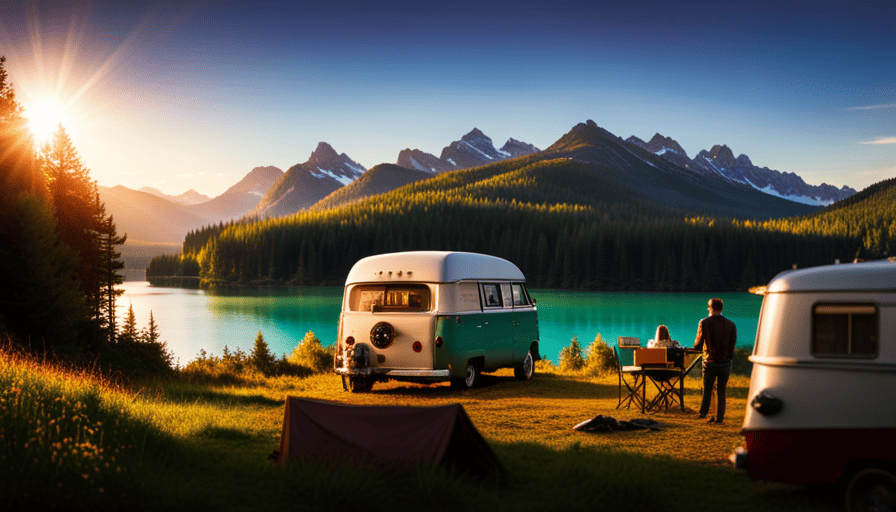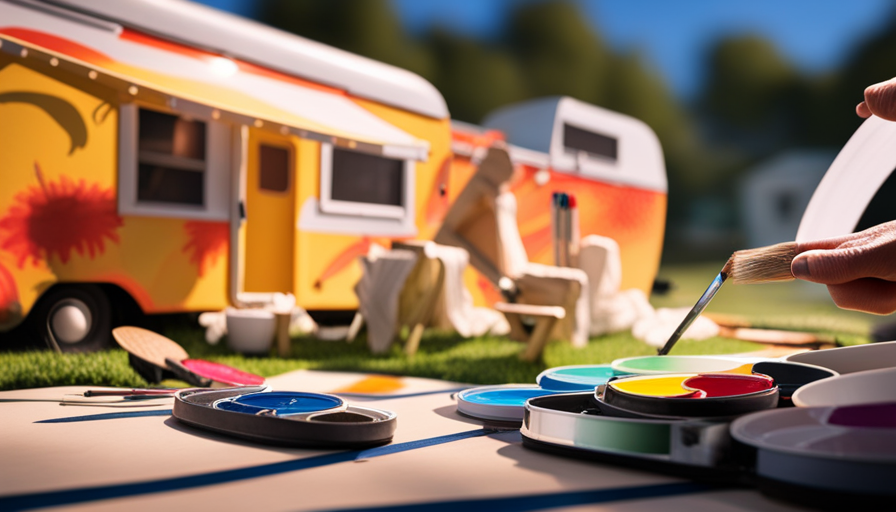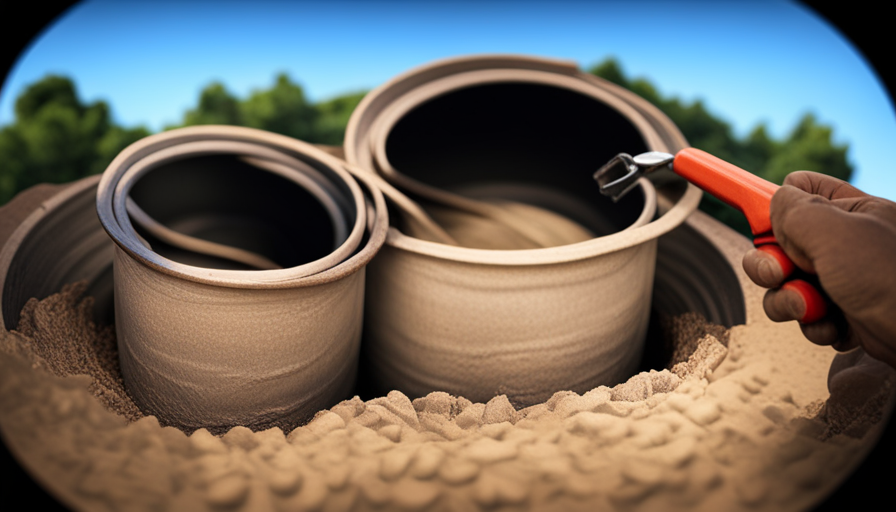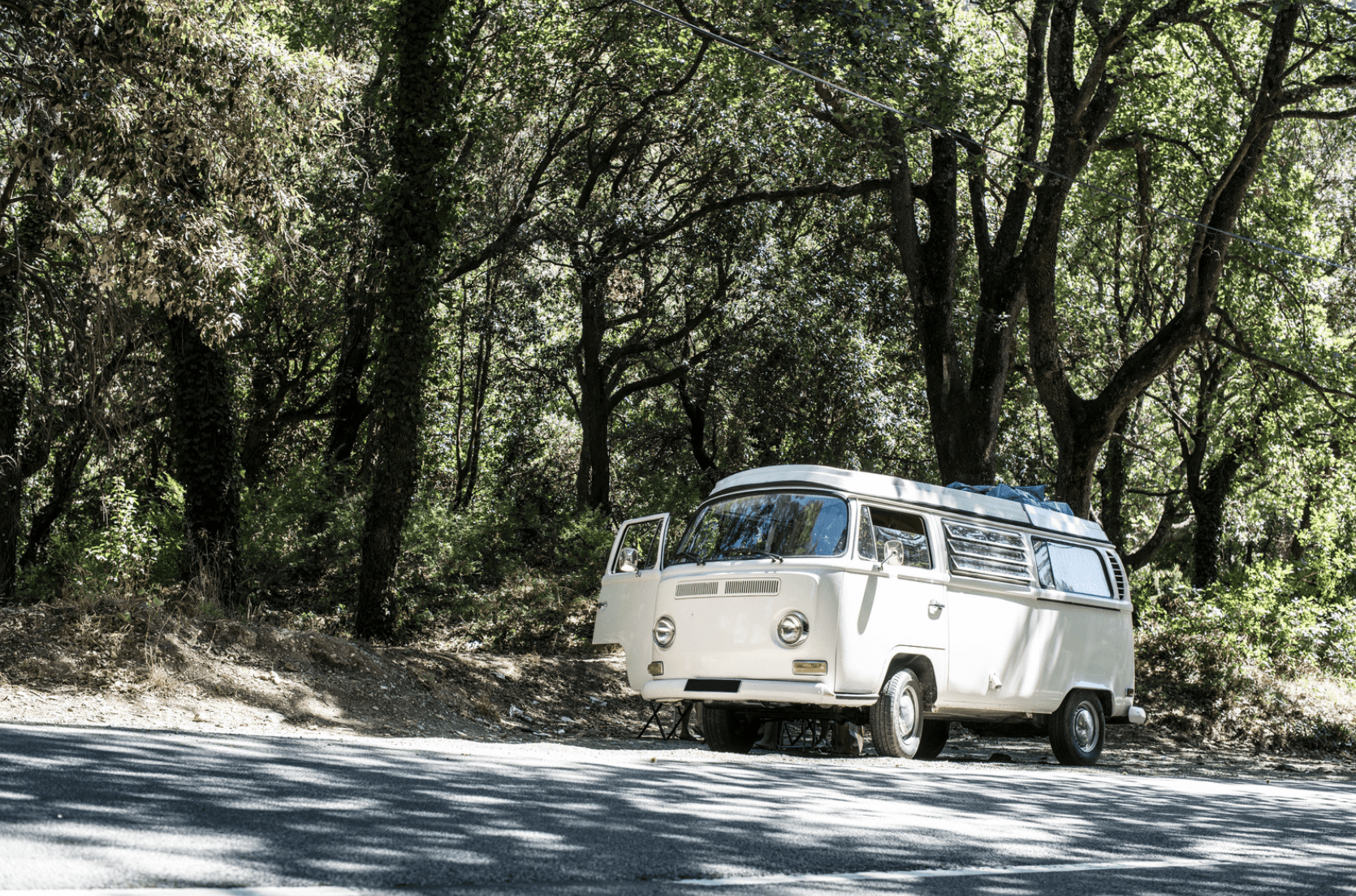Picture this: You’re setting off on an epic camping journey, with miles of road ahead and the excitement of stunning views and memorable moments just around the corner. Hang on a sec, did you remember the key to cozy and easy-going adventures? Yep, I’m talking about how big your camper’s water tank is.
Just like a heart keeps a body alive, a water tank sustains your camping journey. It becomes the lifeline that quenches your thirst, cleanses your body, and provides for your cooking needs. Choosing the right size water tank is like finding the perfect fit for your camper, ensuring that you have enough water to last throughout your trip.
In this article, we will guide you through the process of assessing your camping needs, evaluating the size of your camper, calculating your water usage, and exploring different water tank options. By the end, you’ll have all the knowledge you need to make an informed decision and embark on your camping adventure fully equipped.
Key Takeaways
- Assess camping needs and consider the size of the camper and the number of people using it to determine the appropriate water tank size.
- Calculate the total water capacity required based on daily needs, including drinking, cooking, personal hygiene, and cleaning.
- Consider the length of the camping trip and access to water sources when choosing the water tank size.
- Research different water tank options available for campers, considering factors such as materials, size, and compatibility with existing plumbing systems.
Assess your camping needs
Assessing our camping needs will help determine the appropriate size water tank for our camper. When considering the size of our camper, it’s important to take into account the number of people that will be using it. A larger camper will typically have more space for a bigger water tank, while a smaller camper may require a smaller tank to fit within the limited space.
Another factor to consider is our water consumption. How much water do we typically use during a camping trip? This includes not only drinking water, but also water for cooking, washing dishes, and personal hygiene. It’s important to estimate our average daily water usage to determine the appropriate size tank that can accommodate our needs for the duration of our trip.
Additionally, we should also consider the length of our camping trips. If we tend to go on shorter trips, a smaller tank may be sufficient. However, if we enjoy longer trips or have limited access to water sources, a larger tank may be necessary to ensure we have an adequate supply of water.
By assessing our camping needs, including camper size and water consumption, we can determine the appropriate size water tank for our camper. This will ensure that we have enough water for all our needs while on the road.
Consider the size of your camper
When you’re thinking about your camper, imagine the freedom and flexibility you’ll have with the perfect water tank. Assessing the size of your camper is a crucial step in determining the right water tank capacity for your needs.
Here are four key factors to consider:
-
Camper Size: The size of your camper plays a significant role in determining the water tank capacity. Smaller campers typically have limited space, so a smaller water tank may be sufficient. On the other hand, larger campers can accommodate larger water tanks, allowing for longer trips without the need for frequent refills.
-
Camping Needs: Evaluate the number of people and duration of your trip. More people and longer trips will require a larger water tank to ensure an adequate water supply for drinking, cooking, and cleaning.
-
Water Usage: Consider your typical water usage while camping. If you prefer long showers or frequently wash dishes, a larger water tank is essential to meet your needs.
-
Storage Space: Remember to factor in the available storage space in your camper. A larger water tank may take up valuable storage space, so ensure it fits without causing any inconvenience.
Considering these factors will help you determine the appropriate water tank size for your camper. Evaluating the number of people and duration of your trip will further refine your decision-making process.
Evaluate the number of people and duration of your trip
To determine the appropriate water tank capacity for your camper, consider evaluating the number of people and duration of your trip.
Imagine you and your family of four embarking on a week-long camping adventure in the mountains, where you’ll need enough water for drinking, cooking, and cleaning. Evaluating the number of people and the duration of your trip is crucial in determining the size of your water tank. The more people you have and the longer your trip, the larger the tank you’ll need.
When evaluating your camping gear, take into account any water-consuming appliances or equipment you’ll be using, such as a portable shower or a water heater. Additionally, plan your meals and consider the amount of water needed for cooking and cleaning dishes. These factors will help you estimate the daily water usage for your trip.
Transitioning into the next section, determining your water usage per day is the next step in finding the right water tank size for your camper.
Determine your water usage per day
Now that we’ve considered the number of people and duration of our trip, it’s time to figure out how much water we’ll be using each day. Estimating water consumption is essential to determine the size of the water tank needed for our camper.
Several factors can affect water usage, including personal habits, available facilities, and the activities we plan to engage in during our trip.
To give you a clearer idea, here are three key items to consider when estimating water consumption:
-
Personal Hygiene: Daily showers, brushing teeth, and washing hands all contribute to water usage. Keep in mind that each person may have different habits and preferences.
-
Cooking and Cleaning: Preparing meals and cleaning dishes require water. Consider the frequency and complexity of your meals to estimate how much water you’ll need for these activities.
-
Outdoor Activities: If you enjoy camping, hiking, or other outdoor activities, additional water may be needed for drinking, cleaning gear, or even washing off after a swim.
By considering these factors, you can estimate your daily water usage more accurately. This estimation will help us calculate the total water capacity required for our camper. With the knowledge of our water consumption, we can proceed to the next section and determine the appropriate tank size for our needs.
Calculate the total water capacity required
Consider the various factors that influence our water consumption to accurately determine the total amount of water capacity needed. To calculate our water consumption, we need to take into account several factors.
First, consider the number of people in the camper and their daily water needs. Each person typically requires around 1-2 gallons of water per day for drinking, cooking, and personal hygiene.
Next, think about the length of our trips and the availability of water sources along the way. If we frequently camp in areas with limited access to water, we may need a larger water tank to ensure an adequate supply.
Additionally, consider our daily activities and habits. Do we take long showers or wash dishes frequently? These habits will influence our water consumption and should be factored into our calculations.
Finally, take into account any specific needs or preferences, such as the desire to conserve water or the need for extra water for pets.
By considering all these factors, we can accurately calculate our water consumption and determine the appropriate size for our camper’s water tank. Taking into account space limitations in our camper, we can then move on to the next step.
Take into account space limitations in your camper
Taking into account the limited space available, it’s crucial to carefully evaluate the available options for accommodating a sufficient water storage capacity inside the camper. When considering space limitations, here are three key factors to keep in mind:
-
Size: Measure the available space in your camper and choose a water tank that fits snugly without obstructing other essential components. Opt for a compact design that maximizes storage capacity while minimizing its footprint.
-
Shape: Consider the shape of the water tank to make the most efficient use of limited space. Rectangular or slimline tanks can be mounted against walls or beneath furniture, utilizing otherwise unused areas.
-
Installation: Look for water tanks that are easy to install and can be integrated seamlessly into your camper’s existing plumbing system. Choose models with flexible mounting options to adapt to different configurations.
By taking these factors into account, you can ensure that the water tank you choose fits perfectly within the limited space available in your camper.
Now that we’ve considered the space limitations, let’s move on to the next step and research different water tank options available.
Research different water tank options available
Make sure you explore a variety of water storage solutions to find the perfect fit for your compact mobile home, allowing you to quench your thirst while on the road.
When researching different water tank options available, it’s essential to consider the materials used in their construction. Common choices include plastic, stainless steel, and fiberglass.
Plastic tanks are lightweight and affordable but may be prone to cracking and leaching chemicals. Stainless steel tanks are durable and resistant to corrosion but can be more expensive. Fiberglass tanks offer a balance between strength and weight, although they may be susceptible to cracking over time.
In addition to considering the tank material, it’s crucial to think about the size of the water tank. Different water tank sizes have their pros and cons. A smaller tank may be suitable if you have limited space in your camper, but it will require frequent refilling. On the other hand, a larger tank will provide more water storage capacity but may take up valuable space in your mobile home.
Consider portable water tanks for additional capacity. These tanks can be easily transported and connected to your existing water system when you need extra water. With a variety of options available, it’s important to select a water tank that meets your specific needs and preferences.
Consider portable water tanks for additional capacity
When exploring portable water storage options for your compact mobile home, it’s essential to carefully evaluate the available choices to ensure optimal capacity and convenience. Portable water tanks offer numerous benefits for campers seeking additional water capacity. Here are four key advantages of using portable water tanks:
-
Increased Water Storage: Portable water tanks provide extra capacity, allowing you to extend your time between refills. This is especially useful if you frequently camp in remote areas without easy access to water sources.
-
Flexibility: With portable water tanks, you have the flexibility to choose the tank size that best suits your needs. Whether you prefer a smaller tank for shorter trips or a larger tank for extended journeys, there are options available to accommodate your specific requirements.
-
Easy Transportation: Portable water tanks are designed to be lightweight and easy to transport. They often come with handles or wheels, making it convenient to move them from your vehicle to your campsite.
-
Compatibility with Water Pumps: When choosing a portable water tank, it’s crucial to consider compatibility with your water pump. Ensure that the tank has the necessary fittings and connections to work seamlessly with your pump system.
To make an informed decision about the right portable water tank for your camper, seek advice from experienced campers or RV enthusiasts who can provide valuable insights and recommendations.
Seek advice from experienced campers or RV enthusiasts
By consulting seasoned campers or RV enthusiasts, you can tap into a wealth of knowledge and gain invaluable insights on finding the ideal portable water storage solution for your compact mobile home.
These experienced individuals have spent countless hours exploring the great outdoors and have likely faced similar water storage challenges. They can provide advice for boondocking, which involves camping in remote areas without access to traditional amenities, such as water hookups.
One important piece of advice they may offer is to consider portable water tanks for additional capacity. These tanks come in various sizes, allowing you to choose one that suits your needs. Seasoned campers may also provide tips for conserving water, as it’s essential when boondocking. They can offer insights on how to minimize water usage while still maintaining a comfortable living environment.
Their knowledge and expertise can help you make an informed decision based on your specific requirements. By understanding the needs of your camper and the amount of water you typically use, you can select the appropriate tank size for your adventures. With their guidance, you’ll be well-equipped to enjoy extended camping trips without worrying about running out of water.
Transitioning into the subsequent section, it’s important to carefully consider all aspects before making a final decision.
Make an informed decision based on your specific requirements
Consider your unique needs and preferences to ensure that you choose the perfect portable water storage solution for your compact mobile home. When deciding on the size of your camper’s water tank, it’s essential to take into account factors such as the number of people traveling with you, the duration of your trips, and the availability of water sources along your route.
To make an informed decision, here are some key points to consider:
-
Water tank materials: Choose a tank made of food-grade materials like polyethylene or stainless steel to ensure the water remains safe and free from contaminants.
-
Tank capacity: Determine the amount of water you will need based on your average daily usage. Consider factors such as drinking, cooking, showering, and dishwashing.
-
Space limitations: Keep in mind the available space in your camper when selecting a water tank size. Consider the tank dimensions and its compatibility with your vehicle’s layout.
-
Maintenance tips: Regularly clean and sanitize your water tank to prevent the growth of bacteria and mold. Use bleach or specialized cleaning products and follow the manufacturer’s instructions.
By considering these factors and implementing proper maintenance, you can confidently choose the right water tank size and material for your camper, ensuring a safe and convenient water supply during your travels.
Frequently Asked Questions
What are some common water tank options available for campers?
When it comes to water tank options for campers, there are several commonly used materials available. These include plastic, stainless steel, and aluminum. Each material has its own advantages and considerations, such as durability, weight, and cost.
As for installation, water tanks are typically designed to fit seamlessly into camper spaces, whether it’s under the chassis, in a storage compartment, or on the roof. Proper installation ensures efficient water storage and usage during your camping adventures.
How can I calculate my water usage per day?
When it comes to calculating water usage, it’s essential to consider various factors such as personal hygiene, cooking, and dishwashing. By monitoring our daily routines and implementing water conservation techniques like taking shorter showers or using low-flow fixtures, we can estimate our water consumption more accurately.
These practices not only help us conserve this precious resource but also contribute to a sustainable and eco-friendly lifestyle.
Are there any portable water tank options to increase capacity?
Portable water tank reviews can provide valuable insights into the pros and cons of different water tank materials. These reviews can help campers make informed decisions about increasing their water capacity. It’s important to consider factors such as durability, weight, and ease of use when choosing a portable water tank.
By researching different options and reading reviews, campers can find the perfect portable water tank that meets their needs and enhances their camping experience.
Can I seek advice from experienced campers or RV enthusiasts when choosing a water tank?
When seeking advice on choosing a water tank, it’s always wise to consult experienced campers and RV enthusiasts. These seasoned travelers have a wealth of knowledge and can offer valuable insights based on their own experiences.
From determining the right capacity to considering the best materials, their expertise can guide you in making an informed decision. So don’t hesitate to reach out to these experts for their invaluable advice.
What factors should I consider when making a decision about the size of my water tank?
When considering the factors for choosing the right size water tank for a camper, there are several pros and cons to consider. One important factor to consider is the amount of available space in the camper. A larger water tank may provide more water for longer trips, but it also takes up more valuable space. Additionally, the weight of a full water tank can impact the overall weight of the camper, affecting fuel efficiency and performance. When filling camper water tank, it’s important to consider the balance between water capacity and available space and weight.
The capacity of the tank should align with your water usage needs and the frequency of refilling opportunities. A larger tank provides more water for longer trips, but it adds weight and reduces storage space.
Additionally, the size should also match the camper’s overall weight capacity and towing capabilities.
What Size Water Lines Should I Use if I Have a Water Tank in My Camper?
When considering the size of water lines in a camper with a water tank, it is important to prioritize efficiency and functionality. Opting for an appropriate size ensures a reliable water supply without compromising the overall performance. Consulting experts and considering the specific needs and capacity of your camper can help determine the ideal size of water lines for a seamless camping experience.
Conclusion
In conclusion, determining the appropriate size water tank for your camper is crucial for a successful camping experience. By assessing your needs and considering the size of your camper, evaluating the number of people and duration of your trip, and calculating your water usage per day, you can determine the total water capacity required.
Additionally, researching different water tank options, considering portable water tanks, and seeking advice from experienced campers will help you make an informed decision. So, whether you’re embarking on a weekend adventure or a long-term journey, choose wisely and ensure a constant water supply for all your camping needs.
Happy camping!

